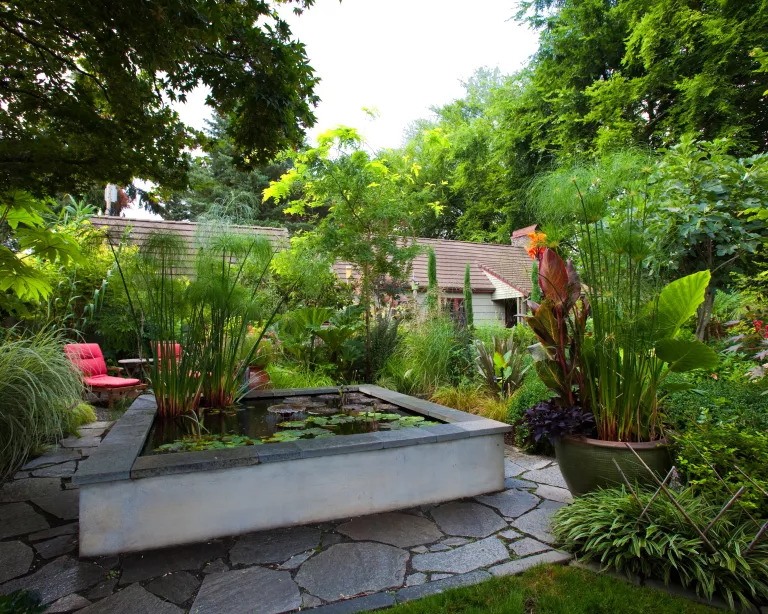
2022-08-30T10:14:15
Bring a water feature to life with these best pond plants that will enhance a peaceful setting and encourage wildlife. Adding pond plants to a pond or water feature in your garden, will help to keep your pond healthy and algae free, as well as looking beautiful and encouraging visiting wildlife. Bringing in water to an outdoor space is a powerful way to make a statement and add a cooling and relaxing element. We have long known about the calming effects of water and adding it in our backyard can entirely change the atmosphere of the space. Garden pond ideas and water features are also great for welcoming in wildlife. They are part of a garden ecosystem which will help to create balance. Moreover, the addition of species like frogs, newts and dragonflies as wildlife garden ideas adds life and movement to the garden, and a splash of color. There are many benefits to adding pond plants. They not only create a stunning feature but also help maintain the water quality, keeping it well aerated, clean and clear. By creating the right balance of pond plants, your pond will need less maintenance for a sustainable garden. POND PLANTS – WHAT TO CONSIDER There are several different types of pond plants that can be categorised as follows: *Bog plants are adapted to life in damp, boggy soil. They are great for wet areas of the garden, and water gardens. *Marginal plants grow well on the edge of ponds, up to around 15cm deep. They can be tall plants, that can go behind a pond to create a display, or shorter plants that help to create a natural looking border *Deep marginal plants go in the deeper water, around the edge of a pond. They can be planted up to 40cm deep and will grow to the surface of the water. *Deep water plants and submergents are the plants that are most important for oxygenation and maintaining healthy water in your pond and reducing the growth of algae. They can either be planted, submerged or floating and will occupy water that is more than 40cm deep. *Floating plants as the name suggests, float on the water's surface, but some of these plants can cause problems in ponds by blocking out light to other plants and therefore decreasing oxygen levels. There are those that are very beneficial, and they will create spaces for wildlife and fish and help keep the water temperature more stable in smaller ponds. CAN I USE NORMAL SOIL FOR POND PLANTS? When making a wildlife pond, we cover the liner with around 6-8 inches of low-nutrient clay soil. This will also make it easier for plants to grow in your pond, providing them with a more natural environment for their roots to grow. Ensure tall plants are planted at the back of a pond, and shorter plants at the front so that your pond isn’t being obscured from view. DO POND PLANTS KEEP THE WATER CLEAN? The pond plants that keep water clean and clear are the aerating plants, such as Fanwort and Hornwort. This is because they take in nutrients from the water through their roots and through their foliage. Excess nutrients in water leads to algae. Plants that are fast growing will generally out-compete algae, taking the nutrients for themselves. But these plants, such as water lettuce and water hyacinth, should be controlled by removing a portion of them regularly to stop the surface being fully covered. If you do have an algal bloom, this is a normal part of pond ownership. You should try to remove the algae carefully and place it on the edge of the pond so that anything living inside it can crawl back into the pond. Ensure that you are not using nitrogen or ammonia-based fertilisers anywhere near a pond. These are the most likely to cause damaging levels of nutrients that will cause your pond to get clogged with algae.

Have a question? Ask here!
Required fields are marked *